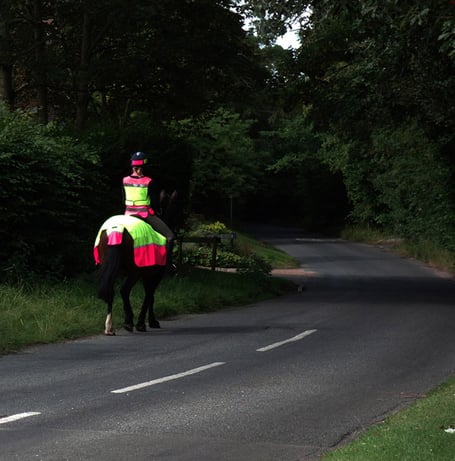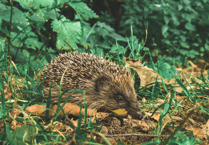Household Cavalry horses galloping through the streets of central London made the headlines last week, and the incident is a shocking reminder that even the best trained horses (indeed, horses trained for warfare) can be spooked.
They are a prey animal, with an instinctive fright and flight response.
The Cavalry horses had been taking part in routine parade practice when five of them bolted after hearing a loud crashing noise from a nearby building site, throwing off and injuring their riders.
Three of the horses were caught relatively quickly, but two of them (Vida and Quaker) were so scared that they kept on running for almost five miles - along the Mall, past Buckingham Palace, through Belgravia and up Fleet Street. Along the way they collided with vehicles including a bus and a taxi, and several pedestrians were injured.
Whilst the humans involved are all on the road to recovery, Vida and Quaker were seriously hurt and remain under close veterinary supervision.
Closer to home, most horse riders will need to ride on the road at some point, whether it’s to reach an off-road route or to connect one bridleway to another.
It can be very frustrating to be in a vehicle that’s stuck behind a horse, especially when the latter is plodding along at five miles per hour. But please be patient.
Just like the horses in London last week, they can be unpredictable and become frightened by something they perceive to be a threat (a new road sign, for example, a plastic bag in a hedge, or a revving engine).
And please don’t curse horse riders who are riding two abreast – this is legal and it can help to make the ‘obstruction’ shorter and more defined. When you do pass a horse you should do so very slowly, at less than 10mph, allowing at least two metres of space (this is stipulated in the Highway Code).
There are lots of other road safety tips that even experienced drivers should re-familiarise themselves with:
- Fresh manure on the road could indicate that there are horses, cattle or sheep just around the next corner; and fresh mud on the road could be a sign that a slow-moving tractor may be just ahead of you.
- Hidden dips (which make it difficult to see oncoming traffic) are a feature of many Manx roads. Do you know what the warning sign for a hidden dip looks like?
- If you see a bird or wild animal in the road sound you horn and swerve to avoid it if it’s safe to do so. Deliberately running over these creatures is a criminal offence.
Back to horses: riders also have an obligation to keep themselves and their mounts safe, but there are a number of people who do not kit themselves or their horses out in hi-vis, reflective clothing and equipment.
Wearing hi-vis when you’re using the road gives other road users extra time to react, which could save the life of both rider and horse.
Riders should also remember to take their mobile phones with them in case they need to call for help; but although it’s tempting to check your phone for calls and messages, using your mobile phone whilst riding is illegal.
We inevitably need to share our roads, so let’s do this with respect for other road users – whether they’re humans or animals – and please bear in mind that you are more likely to be involved in a fatal road accident on a rural road than on an urban one.
A report by the National Farmers Union found that there were more than 1,000 deaths on the UK’s rural roads in 2022, with one in 31 collisions proving fatal; compared to one in 120 on urban roads.





Comments
This article has no comments yet. Be the first to leave a comment.